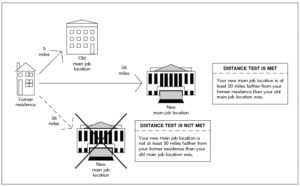Marketing Your Service Business
Whether you are a seasonal tax preparer, a neighborhood car wash, a painter or a realtor, consumers can’t go a week without the services of a local entrepreneur. One the hardest parts of being in a service business lies in how you go about creating your market. As such, a sizable roadblock often encountered is how hard it is to promote a product that technically does not exist until the customer has made their purchase.
Listed below are 5 ways that you can promote your service business.
Make sure customers can find you. The vast majority of both male and female shoppers do research on the web before making a purchase. Furthermore, women shoppers in particular look for “deeper” information when deciding on which company or service to choose. For these reasons, having a company website is a smart and affordable way to ensure that your business and the services you offer can be found.
Let customers know you. Good relationships are built on trust. So it’s natural that customers want to learn as much as they can about your company and the people that stand behind it. Once you’ve created your website, why not consider integrating your blog into it? Studies (like this one) indicate that business blogging can lead to as much as 55% more site visits when compare to sites that don’t. But the real point of the blog should be to let customers know more about just who you are!
If you look at the category Who’s The Boss on our site, you can get some insight into our CEO Jared Rogers. Under this category, he showcases things about the company and his story, photos, family and hobbies. Why? So that you get to know more about him and see if his personality matches with yours. The reality is that most service businesses are differentiated not by their services, but by the people who provide and stand behind them.
Tout your USP or value proposition. What will make customers or clients select your company vs. your competitor’s? Many people choose the service provider that offers the greatest value for their money, as there’s often price parity among the principal players. Thus, one should craft their Unique Selling Proposition (USP) and communicate it to each and every prospect you interact with. So the best way to win business is not to cut your prices or rates, but instead add products or services that elevate your USP – making it too good to resist!
Offer your customers incentives. Customers who’ve had positive experiences with your company in the past will happily return. But tempting new customers requires making a special offer. Businesses that provide home services (e.g. rug cleaning, painting, home heating or air conditioning) can benefit by sending consumers coupons through a service such as Valpak. Your coupon offer will be mailed in an envelope with others, thus your cost of mailing is less than if you did it stand alone (thus allowing you to send to a greater number of people). Although you won’t have the undivided attention of your consumer, mail from a known marriage-mail provider is often well-received. For long-term results, create a offer that will motivate new customers to make more than a single purchase.
Communicate with your prospects frequently. It costs considerably less to keep a customer than to win a new one. Thus, it’s smart to maintain campaigns that upsell or resell to existing ones. To do this, you should communicate with your customer database at least every four to six weeks. If you don’t, you’re missing opportunities to grow your business. Now, every communication doesn’t have to be a sales pitch. What you are trying to do is create Top Of Mind Awareness.
In this post we talk about how you can get new clients via a referral program that emphasizes TOMA. Essentially, you want to use a combination of alternating sales calls with e-mail and postal mail. By interspersing e-newsletters containing case histories, postcards with promotional offers and calls offering relevant and valuable information, you will ensure that YOU are the one they think of when it’s time for them to make a purchase.



